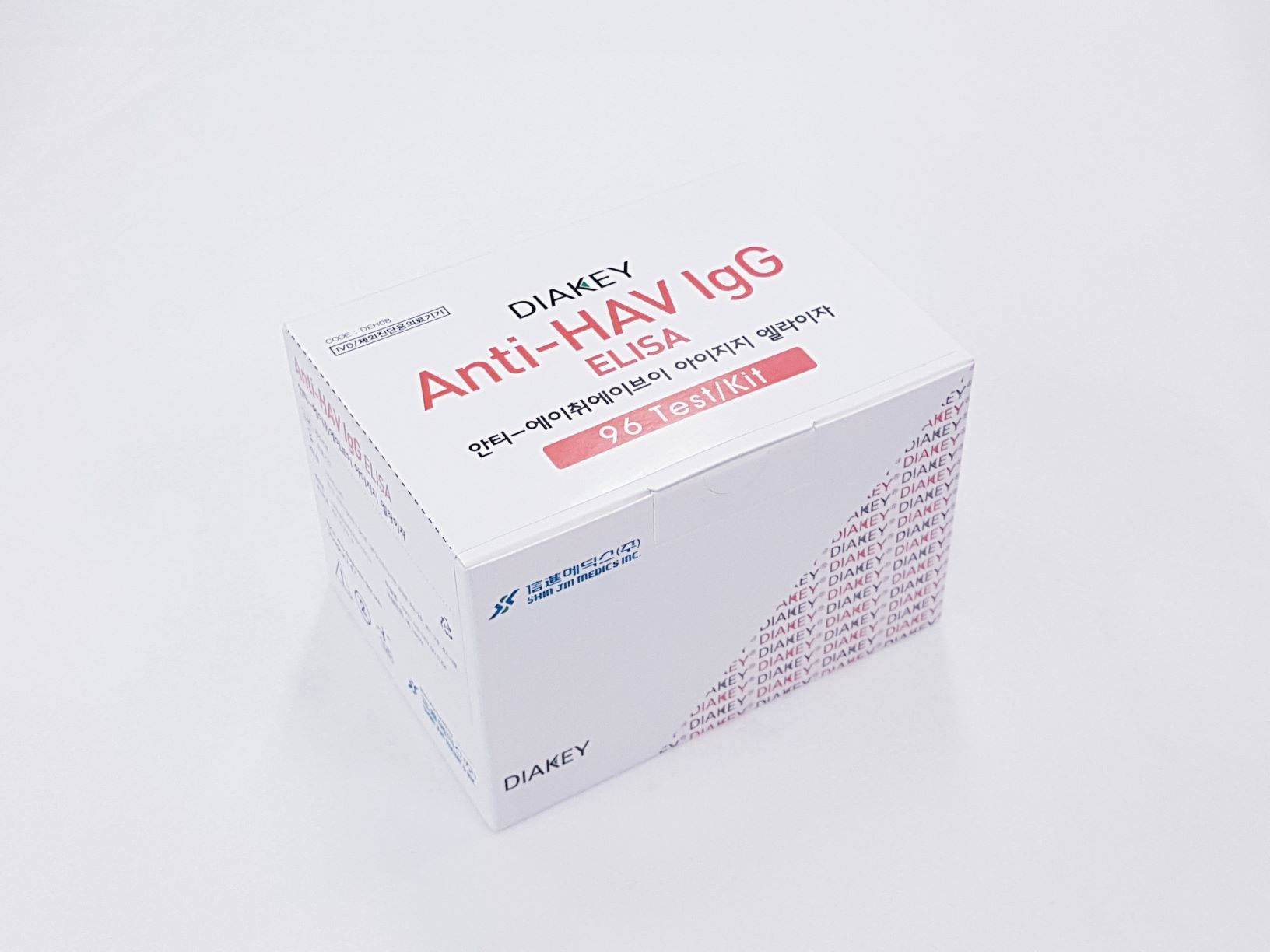Product

DIAKEY Anti-HAV IgG ELISA
Intended Use
Enzyme-Linked Immuno Sorbent assay for qualitative detection of Anti-HAV IgG in human serum or plasma
Introduction
The hepatitis A virus is a single-stranded, positive-sense, linear RNA enterovirus and a member of the Picornaviridae family. Humans, viral replication depends on hepatocyte uptake and synthesis, and assembly occurs exclusively in liver cells. Acquisition results almost exclusively from ingestion (i.e., fecal-oral transmission), although isolated cases of parenteral transmission have been reported. The hepatitis A virus is an icosahedral nonenveloped virus measuring approximately 28 nm in diameter. Its resilience is demonstrated by its resistance to denaturation by ether, acid (pH 3.0), drying, and temperatures as high as 56℃ and as low as -20℃ The hepatitis A virus can remain viable for many years. Boiling water I an effective means of destroying it, and chlorine and iodine are similarly effective.
Principle of the Assay
The DIAKEY Anti-HAV IgG ELISA is a non-competitive immunoassay. During the reaction, sample and monoclonal anti-HAV antibody attached to the conjugate combine competitively inside the plate where dispensed HAV Ag is attached. After the reaction, the materials which have not been combined are removed and the amount of complex attached to the solid phase is inversely proportional to the amount of HAV antibody inside the sample. The result is calculated by reading absorbance using spectrophotometer.
Handling Precaution
- Do not use mixed reagents from different lots.
- Do not use reagents beyond the expiration date.
- Use distilled water stored in clean container.
- Use an individual disposable tip for each sample and reagent, to prevent the possible cross-contamination among the samples.
- Rapidly dispense reagents during the assay, not to let wells dry out.
Use Precaution
- Wear disposable globes while handling the kit reagents and wash hands thoroughly afterwards.
- Do not pipette by mouth.
- Do not smoke, eat or drink in areas where specimens or kit reagents are handle.
- Handle samples, reagents and loboratory equipments used for assy with extreme care, as they may potentially contain infectious agents.
- When samples or reagents happen to be spilt, wash carefully with a 1% sodium hypochlorite solution.
- Dispose of this cleaning liquid and also such used washing cloth or tissue paper with care, as they may also contain infectious agents.
- Avoid microbial contamination when the reagent vial be eventually opend or the contents be handled.
- Use only for IN VITRO.

